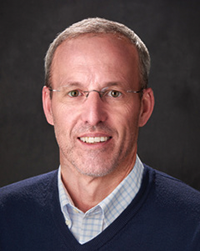The latest National Pharmacist Workforce Study examined the pandemic’s impact on pharmacy and how the industry can move forward.
By Athena Ponushis
The pandemic presented pharmacists with a paradox: Pharmacists are essential, they are problem solvers, they expand access to healthcare, but they are stressed out, need more support and want to be given more authority. Wanting to look more closely at the pandemic’s effects on pharmacy and the future of the profession, the Pharmacy Workforce Center (PWC)—a nonprofit corporation comprised of major national pharmacy professional and trade organizations, including AACP—conducted an interim study in 2022. The National Pharmacist Workforce Study (NPWS) found that, on the whole, pharmacists enjoy their jobs.
Yes, certain settings are problematic and some pharmacists are burned out, but there needs to be balance in the narrative, said Allie Jo Shipman, senior director of policy and professional affairs at the National Alliance of State Pharmacy Associations and former PWC president who oversaw the 2022 study. “There are many pharmacists who are working in positive settings, who are engaged in work activities that are really impacting patient outcomes, and when they can do that, their work-life outcomes are better,” Shipman said.
The NPWS indicated that pharmacists in ambulatory care settings or independent and small chain community practice settings were mostly satisfied with their work life. In ambulatory care settings, 70 percent of respondents said they were satisfied with what they spend their time doing at work, and in independent and small chain settings, 85 percent of respondents said they had a high level of autonomy, which they believe enabled them to improve patient medication safety and left them feeling fulfilled.
Such feedback could be used to recruit more student pharmacists and illustrate that positive work environments do exist. But NPWS researchers do not want to ignore the data provided by pharmacists who are unhappy in other practice settings. While many responses were discouraging, Shipman pointed out that having that data is helpful, lending ample research opportunities for the Academy, as well as opportunities to have realistic conversations with students about what to expect in the workplace and how to become agents of change.
Focusing on What Works
The 2022 NPWS took a deep dive into how the pandemic changed pharmacy practice and quality of life for pharmacists. The study classified the data into different practice settings: independent and small chain settings; large chain, mass merchandiser and grocery stores; inpatient and outpatient health systems or hospitals; and ambulatory care, which Shipman hopes will unite, rather than divide, pharmacy.
“I think finding equal respect and value in all practice settings will effect change, rather than passing along the message, ‘Chain pharmacists are struggling, you should not be a chain pharmacist.’ Instead we should be saying, ‘OK, a large portion of our profession is struggling, how do we help with this?’” Shipman said. “Our message should be more of, ‘Let’s bring everyone in and figure out what we can do about this,’ because large chains are the most visible part of our profession and we can’t write it off as a lost cause.”
Dr. David Mott, associate dean for advancement at the University of Wisconsin-Madison School of Pharmacy and the principal investigator of the study, agreed that pharmacy should amplify positive stories to counter the negative narrative. “Instead of just talking about the bad work systems, let’s make the point that there are good work systems out there, and if you want to move forward in terms of changing work systems for pharmacists, you have to highlight these positive systems,” Mott said. “Research needs to go into these positive systems and find out what’s making these successful, relative to negative work systems.”
Mott noted that it helped his research group to shift their focus to positive characteristics. “For instance, we know that autonomy is a really important aspect that allows pharmacists to do the things they want to do. There’s maybe 30 percent of work systems where autonomy is pretty bad, but more like 60 percent of work systems where autonomy is really good, so let’s look at why autonomy is so much better in 60 percent of these work systems. We need to learn from these places, I think that’s really important to figure out.” The NPWS did show an interesting correlation between higher or lower job satisfaction with autonomy and support.
Mott anticipates that it will be challenging for researchers to gain access to bad work systems and diagnose what’s going on, then work with employers to determine what can be changed to improve the situation for pharmacists. “I think that’s going to be a big challenge and it’s something that our workforce research group talks about a lot, but we really believe the next step in this research has to be solving
some of these problems,” he said. “We are at the point now where I don’t think it’s good to just let things keep going. We really do need to make changes and improve work systems for pharmacists so they can be motivated and not burned out, and have enough staff so they can perform at the top of their license and improve care.”

Dr. Caroline Gaither, professor of pharmaceutical care & health systems at the University of Minnesota College of Pharmacy and another 2022 NPWS author, believes the pandemic exposed poor working conditions that already existed in pharmacies but intensified during the past few years. “Pharmacists were doing a lot of different tasks and they were doing these tasks without a lot of additional staffing,” Gaither said. This led to exits from the profession, again suggesting that work systems need to improve. “Pharmacies need to consider, what is the best way to utilize the skills of the pharmacist? How do you set up the work system within your pharmacy so that the pharmacist has the opportunity to do more clinical activities, like counseling and making sure patients understand how to take their medications, doing all those things that we teach them at school? Too often when graduates go into practice, the workflow and the way pharmacies are designed does not allow pharmacists to do all the things they know.”
Even though pharmacists are widely overworked and understaffed, the NPWS found that across major practice settings, about 30 percent of respondents said they did have an adequate number of pharmacists. “So again, we need to peel back the onion a little bit and get into these work settings and figure out, why do 20 percent of ambulatory care practice settings have enough staff? Are they able to retain pharmacists, are they able to attract pharmacists, what is it about the management of those settings that seems to be really positive?” Mott asked. “Those are the things we don’t know very much about.”




